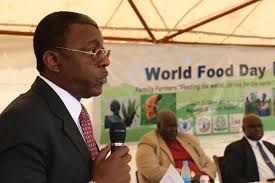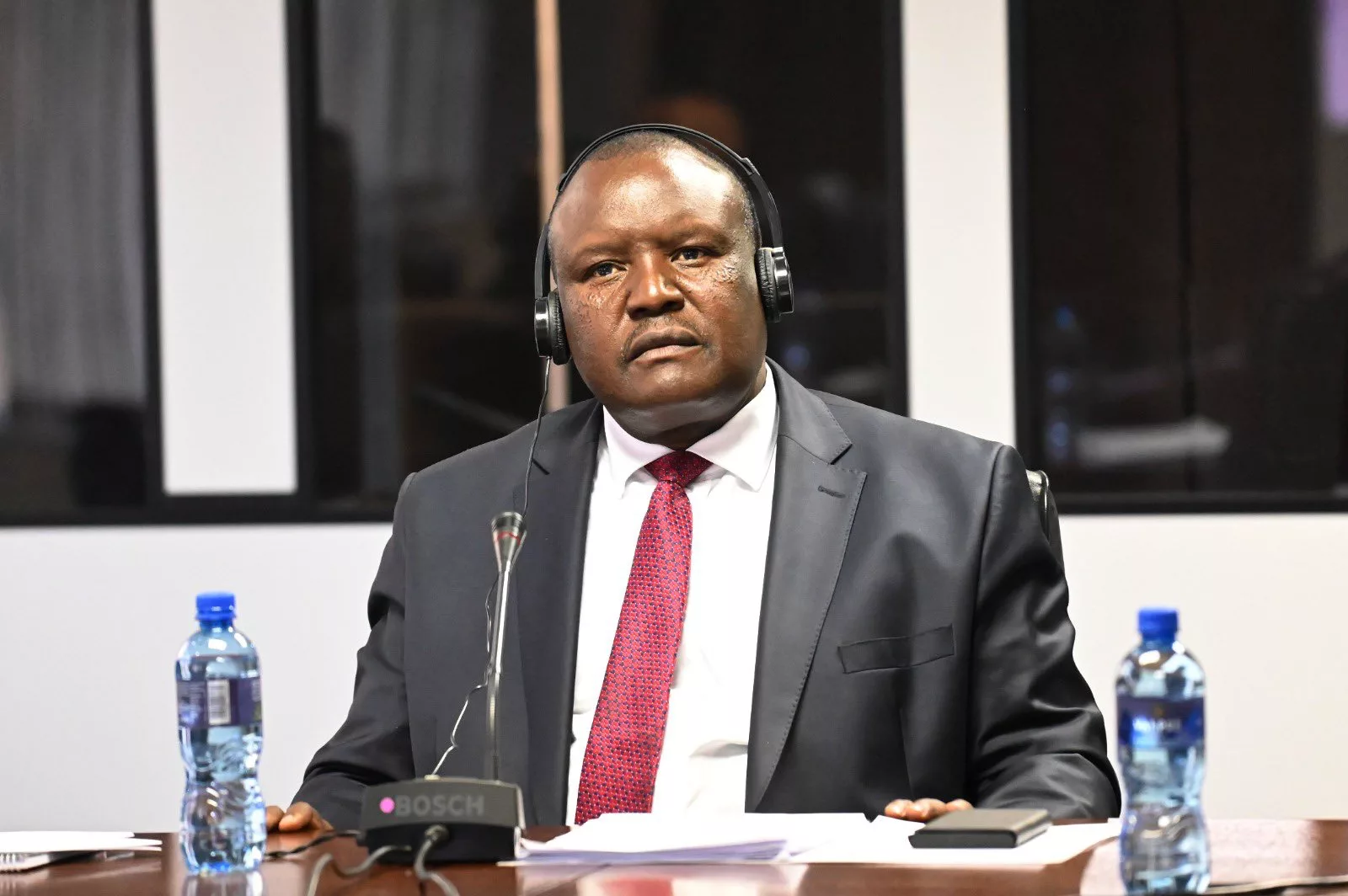By Byron Mutingwende
It’s September 2015 in Chivi District in Masvingo Province, Maud Huruva is toiling her field in the scorching heat of the afternoon. Scientists have talked about the El Nino climatic phenomenon that leads to severe drought but she has hopes that perhaps the heavens will smile upon their area and rains would fall miraculously to revive the wilting maize crop.
“We have heard about the impending drought on radio but predictions about the rains have often been proven to be false. In many years we have heard stories of possibilities of bumper harvests due to good rains but it has always tuned out to be otherwise. In the same manner, the people at the Met Office may be wrong about the impending drought so we are tilling our fields in the hope of a bumper harvest,” Huruva said, digging the field as dust bellows into the sky like smoke from a thermal power station in Harare.
As she worked the field, two of her children had not gone to school because they had gone to fetch water some 15km from their homestead near Mandamabwe Growth Point in Chivi. Most of the rivers and boreholes had dried up and so had the pastures.
The situation had become so dire that the livestock, particularly cows, were dying due to a lack of grazing pastures and water for drinking. The previous farming season had not been good either since Chivi is among Zimbabwe’s drought-prone districts.
“We are now selling our cattle for as little as $50. Keeping the livestock is useless because it is still going to die due to the drought. It’s much better to sell our cattle at such low prices than to wait for them to die due to the drought. From the sale of one cow, we will buy just four bags of maize since each costs $11. We don’t know how we will pull through 2016 if the rains won’t come soon,” Huruva says, wiping sweat from her forehead, her emaciated body revealing ribs, which reveal the degree of possible starvation she was staring in the face.
Huruva’s hopes were dashed as true to the Met Office’s prediction, the rains did not come and the drought worsened. Thanks to a partnership between the Government of Zimbabwe and stakeholders in humanitarian assistance including the United Nations, the famine and hunger was averted.
The United States Government, through the U.S. Agency for International Development (USAID), provided humanitarian assistance for over 2 million Zimbabweans during the El Niño-induced drought that led to widespread crop failure and left 4.1 million rural Zimbabweans food insecure.
In a statement, the US Embassy in Zimbabwe said that as the annual harvest for 2017 approaches, the USAID and its partners were reviewing the progress and achievements of a successful drought response and continuing ongoing activities that aim to improve long-term food security for Zimbabwe.
“The United States stood with the people of Zimbabwe during the drought,” said USAID/ Zimbabwe Mission Director Stephanie Funk. “USAID’s assistance reduced suffering for over 2 million Zimbabweans and ensured that families had the necessary tools to cope with the negative effects of the drought.”
Since 2015, USAID has responded to the drought with agility and speed to meet the immediate food needs of the most vulnerable people while also building their resilience against future droughts. USAID supported a substantial expansion of the World Food Programme (WFP)’s Lean Season Assistance, which provided a full basket of monthly food rations for the most food insecure people in the hardest hit districts of Zimbabwe. This food assistance also reached hundreds of Zimbabweans displaced by flooding last month.
Together with partners including UNICEF and WFP, USAID is providing emergency nutrition for malnourished children and people living with HIV, nutrition and health services, access to safe drinking water, and seeds and livestock support to promote agricultural recovery. This emergency assistance aims to maintain or improve the nutritional status of vulnerable groups, save lives, and facilitate a quicker recovery for struggling communities.
During the drought, USAID also dramatically scaled up its two ongoing food security activities, Enhancing Nutrition, Stepping Up Resilience and Enterprise (ENSURE) and Amalima, which aim to address the underlying causes of chronic food insecurity and malnutrition in rural areas. Launched in 2013, ENSURE and consortia led by World Vision and Cultivating New Frontiers in Agriculture, respectively, are implementing Amalima.
These activities provide food for pregnant and lactating women and children under the age of 2; help communities repair and create productive assets, compensating workers for their labor; and provide health and nutrition training, improved water and sanitation systems, and training to increase agricultural productivity and incomes. As the drought intensified, ENSURE and Amalima adapted their work to provide additional food rations and assisted communities to create 80 productive assets, including dams, irrigation schemes, and dip tanks, to improve food security over the long-term.
These efforts have already demonstrated broad impact. The global acute malnutrition rate among children under 5 actually fell from 4.4 percent in May 2016 to 3.1 percent in January 2017 at the height of the “hunger season.” USAID’s long-term food security activities are also producing results: the stunting rate – chronic malnutrition that impacts children’s growth and development – has decreased from 32 percent in 2010 to 27 percent in 2015.
The World Food Programme (WFP), together with the Government of Zimbabwe, launched a five-year plan today to build resilience, end hunger and boost nutrition in country.
“We are delighted with the collaboration between WFP and the Government in our bold and shared vision of a hunger-free Zimbabwe. This new plan is an embodiment of our partnership. While maintaining our strong emergency capacity, we will also focus on building the resilience of vulnerable, food-insecure Zimbabweans, and reinforcing national social protection efforts,” said Eddie Rowe, WFP Zimbabwe Representative and Country Director, recently.
WFP is the first United Nations agency to align its corporate strategy (2017-2021) with the Sustainable Development Goals (SDGs), clearly outlining how the agency both contributes to and supports governments to achieve them. WFP Zimbabwe, as of April 1, is one of the first countries to execute this shift at the country-level. While maintaining strong humanitarian assistance capacity, WFP Zimbabwe’s new Country Strategic Plan (2017- 2021) focuses on supporting longer-term national social protection and resilience efforts, strengthening the systems and institutions needed to help achieve Zero Hunger. At the core of the plan are partnerships with a wide range of stakeholders and strong support for national efforts.
“The Office of the President and Cabinet in Zimbabwe welcomes WFP’s Country Strategic Plan, which fully reflects the national objectives set forth in the Zimbabwe Agenda for Sustainable Socio-Economic Transformation,” said Ozias Hove, Senior Principal Director, Office of the President and Cabinet.
“WFP’s efforts support the Government’s social protection strategy, so that vulnerable populations across the country are able to meet their basic needs all year round, and thus minimize the need for humanitarian responses in future,” added Prisca Mupfumira, Minister of Public Service, Labour and Social Welfare.
The Country Strategic Plan is based on the 2015 Zero Hunger Strategic Review, led by the Vice Chancellor of the Women’s University in Africa, Professor Hope C. Sadza, and undertaken in collaboration with a number of stakeholders in Zimbabwe.






